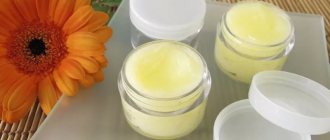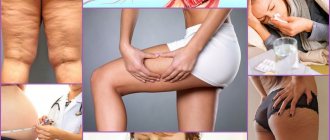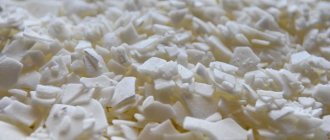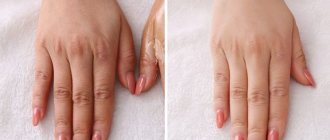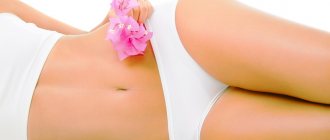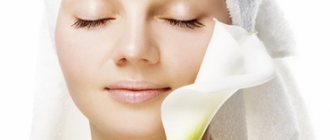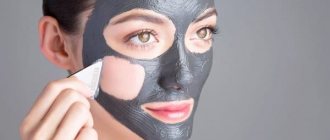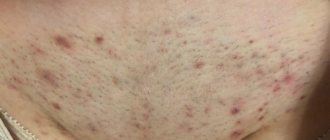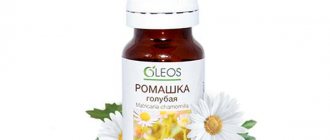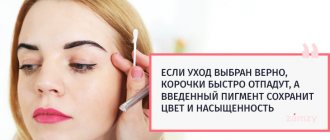Paraffin hand masks are very widely used in salons. They are recommended to be done after a manicure to moisturize the skin and strengthen the nails. For a procedure using warm paraffin, it is heated in a special bath, and then applied to the client’s hands several times in a row, and after some time it is removed. This method has certain contraindications: for example, increased skin sensitivity, arterial hypertension. In addition, some are afraid to do this procedure in a salon for reasons of hygiene or are simply intolerant of hot things. Especially for people who would not like to apply hot paraffin to their skin, cold paraffin for hands was invented.
The essence of cold paraffin therapy
Cold hand wax used during the procedure creates a greenhouse effect. It is not necessary to melt the paraffin; usually the wax is rubbed briefly in your hands and evenly distributed over the surface of the skin. The procedure allows you to achieve the effect of hydration, rejuvenation and nutrition.
Cold paraffin therapy takes place in several stages. On average, a session lasts up to 30 minutes. You can make your own wax or purchase a set from a specialty store. Paraffin is applied not only to the hands: the wax is evenly distributed over areas with dry, rough or cracked skin (knees, elbows).
WASHERS
In order to properly apply ointment to a sliding surface, it must first be cleaned - from dirt and old “chemicals” used before, degreased so that the new paraffin is better absorbed into the unevenness. For this purpose, liquids are used - washes in different versions and special napkins. Good removers do not dry out the base, leaving it in good condition for applying paraffin. The washes are suitable for cleaning both smooth sliding surfaces and cross-country ski models with notches.
All washes are here
- If you are an amateur athlete and do not often deal with the process of applying ointments, then buy the remover in small containers. Large container washes or sprays that cover a large area after spraying are good for working with snowboards or skis.
- To clean skis that use Skin technology, choose not classic products for cleaning the sliding surface, but products with a mention of “Skin Care” on the label.
- When using washes, be sure to do the cleaning process in a ventilated area, in the fresh air and away from open flames. If organizing the flow of fresh air is problematic, it is recommended to use a respirator.
- Special packaging - an aerosol with an applicator for removing the klister, containing the remover itself and fabric applicators that distribute the solution over the surface and which clean the surface of old ointment. A very convenient combination that can be used immediately before the start to quickly change the composition of the ointment layer and permanently when preparing skis or snowboards in advance.
- To remove different types of ointments from the sliding surface, you can use different removers that dissolve them better: Remover SWIX 2018-19 for gliding ointments
- To remove dirt and dissolved old ointment, it is convenient to use wipes, for example - SWIX Fibertex
Difference between cold and hot paraffin therapy
Unlike hot paraffin therapy, cold paraffin therapy is carried out after extensions, filing and painting of nails. After a cosmetic procedure, the skin becomes dense and the coating will not adhere well to it. At home, cold paraffin therapy is usually carried out by people who are familiar with the main stages and essence of the procedure. In spa salons, the cost of paraffin therapy varies between 300-1000 rubles.
The difference between hot and cold paraffin therapy is quite significant:
- Cold wax is considered completely hypoallergenic, so the procedure has no contraindications.
- Cold paraffin therapy does not require much effort, special tools or materials. The procedure is performed quite quickly.
- Cold paraffin is enriched with various active substances (proteins, vitamins, medicinal plant extracts).
Cold paraffin therapy can be performed at home. A kit for the procedure costs 1200-2200 rubles. It will last for 12-16 months of regular use.
Indications and contraindications
The procedure is suitable for people with dry, combination and oily skin. A relative contraindication can be considered the presence of abrasions, burns and fresh scratches on the skin. It is also recommended to refrain from paraffin therapy for people suffering from inflammatory and fungal infections of the skin.
Before carrying out the procedure, you must carefully familiarize yourself with the main components that make up cold wax. Some substances (for example, honey, chamomile or calendula extract) can cause allergies in hypersensitive people.
Indications for cold paraffin therapy include:
- the presence of corns, calluses on the skin of the feet and hands;
- dryness, peeling, cracking of the skin (the procedure provides intensive nutrition and hydration);
- the presence of microcracks in the skin (paraffin therapy starts the regeneration process at the cellular level).
The cosmetic procedure provides aesthetic care. During the process of applying cold wax, a person gets the opportunity to relax. The cream-wax is applied with light massage movements, which helps eliminate muscle tension.
Efficiency of the procedure
In terms of effectiveness of application, there is no particular difference between cold and hot substances. Using a cold analogue is much easier. It is not recommended to use it on the face. This product can only be used on the feet or hands.
Paraffin hand cream helps:
- Moisturizes and softens the skin of the hands and feet.
- The appearance of firmness and elasticity.
- Elimination of small wrinkles and cracks.
- Strengthening the nail plate.
- Preventing brittle nails.
- Softening the cuticle.
- Elimination of hangnails.
- Elimination of calluses and roughness on the skin of the feet.
- Relieving fatigue and joint pain.
- Healing of small cracks and wounds.
- Protect your hands from harmful environmental influences.
Advantages of cold paraffin therapy
Cold paraffin therapy, unlike hot paraffin therapy, has many advantages. The cosmetic procedure has a complex effect on the skin of the legs and arms. Paraffin nourishes, restores and moisturizes the skin. Experts recommend wrapping 5-6 times a month. The procedure is characterized by a pronounced rejuvenating effect.
When cold wax is systematically applied to the skin, age spots disappear, fine wrinkles are smoothed out, and the skin becomes more elastic. Cold paraffin therapy helps launch regenerative processes at the cellular level. Microcracks occur during prolonged skin contact with household chemicals, various detergents and hot water.
Cream paraffin can be applied to chapped hands. It has also proven itself well in the fight against corns. When performing nail extensions, coloring and filing, cold paraffin does not interfere with cuticle growth. The material is quite hygienic; it is used only once, unlike hot paraffin.
Application benefits
Paraffin hand cream
Cold paraffin has the following advantages:
- easy to apply to the skin and spread;
- consumed in small quantities;
- approved for use by people for whom tissue heating is contraindicated;
- is applied only once, due to which an optimal level of hygiene of the procedure is achieved;
- inexpensive;
- does not require much time for application or additional tools;
- does not require heating, since its consistency is already ready for application to the skin;
- You can make masks 1 or 2 times a week for a long time.
Properties of cold paraffin
Cold hand wax, used in cosmetology, is a purified fraction of petroleum products. It melts completely at 50-52 °C. In cosmetology, paraffin is used, which contains only natural ingredients. Wax may contain various bee products.
Cosmetic paraffin contains:
- macro- and microelements that ensure the flow of oxygen to cells;
- extracts from medicinal plants - components allow the active substances to penetrate faster into the deep layers of the skin;
- carbohydrates - substances of organic origin allow cold wax to quickly warm up;
- vitamin-mineral complex - vitamins A, E, D, providing nutrition, rejuvenation and cell restoration.
Paraffin also contains cocoa butter. The component gives the material plasticity and a light aroma. Manufacturers can also add various dyes, flavors, betters and essential oils to paraffin at their discretion. Experts recommend purchasing a product that does not contain synthetic additives.
Properties of cold wax:
| Properties | Description |
| Relaxation | During a cosmetic procedure, a person relaxes. Therapy helps relieve fatigue. |
| Hydration | After applying cold wax to the skin, the pores open and cleanse. Thanks to the greenhouse effect, moisture penetrates into the deep layers of the skin, moisturizing it at the cellular level. |
| Restoration of blood circulation | The cosmetic procedure is characterized by a thermal effect. This allows you to stimulate blood circulation. After therapy, lymph outflow is restored, cellular renewal occurs faster. |
| Rejuvenation | After cooling, the paraffin hardens, slightly stretching the skin. This allows you to achieve rejuvenation. |
Various natural additives present in cold wax provide intensive nutrition. The skin after the procedure, according to reviews, becomes more velvety.
Recommendations for the use of ointments and paraffins
- Ensure good ventilation of the areas where work is carried out.
- Always use protective masks with recommended filters when working. Do not forget that after completion of work, small particles remain in the air for some time.
- Protective masks must fit correctly and tightly. Replace the filters in your mask before the start of at least every season. Always follow the manufacturer's recommendations for the care and cleaning of this equipment.
- Always use gloves when working with liquid ointments and washes.
- Do not heat irons above recommended temperatures. Clean the working surface of the iron before and after use.
- Heat guns and gas burners must not be used indoors to lubricate skis. Volatile particles and dust that may contain fluorocarbon can form toxic compounds when exposed to high temperatures.
- Smoking is prohibited in ski waxing areas. Tobacco smoke and fine dust particles containing fluorocarbon are a very dangerous mixture.
- Eating in ski waxing areas is not recommended.
- Be sure to collect and dispose of any remaining lubricants after completion of work. Use special containers for this.
- Wash your hands thoroughly after finishing using cleaning products.
Author: Alexander Kozlov
Necessary materials
When performing cold paraffin therapy at home, you can use your imagination. Some tools and materials are replaced with alternatives that are at hand. The use of various cosmetics is allowed. The main condition is the presence of paraffin cream.
During paraffin therapy you will need:
- moisturizing and nourishing cream (applied to the skin at the final stage);
- light serum that is applied under wax;
- scrubbing agents (rolling scrubs or products containing small abrasive particles are suitable);
- mittens, socks or terry towel (the fabric can be fleece);
- dry, wet wipes, paper towels;
- plastic bags, disposable gloves;
- plastic spatulas or spoons necessary for collecting material from the jar (provided that the procedure is carried out in the salon);
- spatulas for single use;
- disinfectant solutions, sprays, gels.
During cold paraffin therapy, you need to have a timer with you. This will allow you to keep track of time.
Cooking instructions
Hand care at home
The procedure for treating the skin of your hands with cold paraffin at home is simple. The product does not require additional preparation, since it is immediately ready for intended use. In addition to paraffin hand cream, before paraffin therapy you need to purchase:
- brush;
- cosmetic mittens or gloves;
- polyethylene gloves.
The brushes are first thoroughly washed with soap and wiped dry. Then the skin is treated with a tonic and a scrub is applied to help eliminate dead cells. Manicures are allowed.
Additional Information. An effective, but optional step in preparing brushes is applying serum.
Special instructions and secrets of use
Cold paraffin should not be applied to the skin of the face. Most often, the procedure is carried out before a pedicure and manicure. You can apply wax to your elbows, knees, feet and heels. Usually, applications are not applied if the nails have recently been painted with varnish. At home, experts recommend carrying out the procedure 3-4 hours before bedtime. This will help increase the effectiveness of the procedure: in the evening, the active ingredients penetrate faster into the deeper layers of the skin.
To enhance the effect, you must use cosmetics of the same brand as cold wax. To give the material additional plasticity, essential oils (2/3 drops) are added to the paraffin.
A test for an allergic reaction is carried out in advance: a small amount of paraffin, to which additional ingredients have been added, is applied to the elbow area. If after removal an allergic reaction does not appear, then you can safely use the material in the future.
Indications for use
Cold paraffin cream is used:
- To restore dry skin.
- To eliminate flaking of the skin of the hands.
- To normalize skin firmness and elasticity.
- As a softener for rough skin.
- To stimulate blood circulation and relieve tired legs.
- As a nail strengthener.
Paraffin therapy sessions help relieve fatigue and irritation. They are often recommended as relaxation procedures. Such procedures can be performed on people suffering from varicose veins.
Application of cold paraffin is suitable for people suffering from dermatological complications due to heat exposure of the skin.
Protocol for cold paraffin therapy for hands
Cold hand wax is applied to the skin in several stages. It is important to follow the sequence.
The main stages of cold paraffin therapy:
- Degreasing and cleaning. You can use special tonics that help not only cleanse, but also moisturize. The spray is sprayed onto the skin and distributed evenly. Remove excess product with napkins. The spray should be absorbed into the skin.
- Scrubbing. Removing dead skin cells is one of the main stages of paraffin therapy. It is carried out to more quickly penetrate the active components of the wax into the deep layers of the skin. Usually a medium or fine grind scrub is used. It is collected from the container with a disposable spatula. The scrub is evenly applied to the hands and rubbed in with light massage movements. Excess is removed with a dry cloth or paper towel. Using the same algorithm, a scrub roll is worn.
- Moisturizing and care. After scrubbing, nourishing cream or cosmetic cream is applied to the skin. Most often, products contain collagen. The cream is taken with a disposable spatula, evenly applied to the skin and rubbed into it with massage movements. The cream has a lighter texture, so it is absorbed faster.
- Paraffin wrap. The wax is quite dense in texture. It may vary in composition. Experienced professionals offer clients several options for paraffin cream to choose from. It is also separated from the total mass with a disposable spatula. The lump of wax is lightly kneaded in the palms and distributed evenly on the skin. The areas between the fingers are worked most intensively.
- Greenhouse effect. It is created by placing your hands in plastic gloves. Then they need to be wrapped in a terry towel. The mask is removed after 20 minutes. Excess cream paraffin can be easily removed with a paper towel or napkin.
- Hydration. This is the final stage, allowing you to consolidate the rejuvenating effect. Light fluid creams are applied to the skin of the hands. They absorb quickly, providing intense hydration. After using such a cosmetic product, a film does not form on the skin.
The procedure can be carried out at home, on your own. The main thing is to observe the frequency of the stages and carefully monitor the time.
Paraffin therapy
Paraffin therapy is a unique set of thermal procedures that soften the upper layers of the skin. This promotes improved pore opening. After this, the pores begin to better absorb cosmetics that are applied directly under the paraffin mask. Upon completion of the procedure, the skin receives intense hydration and is cleansed of toxins and harmful substances.
Benefits for hands
The advantages of applications using paraffin (wax) are justified by the mechanism of its action. After the substance is applied to the skin, it begins to heat up intensely under the influence of body temperature. As a result, the skin sweats intensely and secretes sebum. Along with sweat, water is released, which steams the skin. The active elements in the substance help remove tension and soften rough skin.
Under the influence of steaming, the skin becomes soft. It increases the water balance due to its reverse suction. Hyperkeratosis, calluses and other parts of the thickened stratum corneum begin to be removed more easily.
How to choose a product?
Cold cream-wax for hands must be selected depending on the individual characteristics of the skin. First of all, before purchasing a particular brand of paraffin, you need to carefully study the condition of the cover. There should be no scratches, abrasions, or pustular rashes in the treated area. In this case, paraffin, which contains synthetic additives, can provoke allergic reactions or aggravate the skin condition.
People suffering from infectious and fungal infections of the skin should refrain from undergoing the procedure. If cream paraffin is used for the first time, experts recommend testing in advance for a possible allergic reaction. A side effect can be caused by the presence of honey and other bee products in the wax. When purchasing a product, you need to pay attention to its composition.
Paraffin may contain:
- lanolin;
- vegetable and essential oils;
- vitamins;
- purified paraffin.
Almost all products contain aromatic additives. In most cases, they do not cause damage to health.
How to grind paraffins into powder yourself?
We melt the block on the iron, pour drops of molten paraffin into a basin of water. We collect the resulting paraffin flakes and dry them on paper. Then we grind in small portions on a clean electric coffee grinder. There is no need to throw away the coffee grinder afterwards - the remaining paraffin is easy to remove. Small grains of paraffin require much less heat to melt than a bar. They are easy to distribute evenly over the slip. Melt with an iron, pressing the powder on top. Paraffin consumption is reduced, and there is less work with a scraper and brush. Using frosty paraffin becomes convenient.
Important details
When choosing a lubrication option, you must first of all take into account the condition of the snow and its structure. How long ago did it fall, what was the daily temperature range? The large daily variation in temperatures quickly ages the snow. The method of preparing the ski tracks is important. If the ski track is prepared with a snowcat, then the old lower snow is mixed with the fresh upper snow. Moreover, they melt it, using up a lot of machine power. If the ski track is rolled with your feet, then there is more fresh snow on top. There are many states of snow, for example, fresh snow for lubrication is not the same as fresh falling snow. And falling snow comes in the form of fluffy large flakes and small grains...
It is advisable to check the glide of skis and lubricants on snow of exactly the structure and degree of compaction that is expected at competitions.
One rule for choosing paraffins
The recommendations of lubricant manufacturers look something like this: for new and old snow in the temperature range from ... to ... And the temperature ranges of several paraffins of the same line overlap. This allows the lubricant to be more accurately adapted to the structure of the snow.
For most paraffins, the cold end of the temperature range of use corresponds to fresh snow, and the warm end to old snow. (Not always, there are paraffins whose purpose is snow of only a certain structure, which is necessarily written in the manufacturer’s manual.)
And with fresh snow, you should try paraffin in a colder range, and with old snow, in a warmer range. The above does not apply to icy, aggressive snow. It requires paraffin that is hard and frosty; the fluoride content is often unimportant. A molybdenum additive is desirable.
With paraffins, structures, ski diagrams, in the most general sense, everything obeys the same rule: new, fluffy snow does not fit tightly to the joint, like a “blotter” takes water from the water film, requires harder paraffin, a smoother structure, a smoother diagram for sliding, than follows from the thermometer readings.
I wish you great gliding!
How to cook it yourself?
You can make cold cream wax yourself at home.
To do this, you need to purchase separate dishes in advance:
- mortar;
- mixer;
- ceramic, wooden spoons and cups.
Porcelain, glass and enamel dishes must be abandoned. You will also need electronic scales, thanks to which you can maintain the proportions. The ingredients must be completely natural. The finished wax cream is stored in a clean, hermetically sealed container on the bottom shelf of the refrigerator. Experts recommend preparing cold cream wax in small portions.
Required components:
- beeswax;
- turpentine or lanolin;
- olive oil.
In addition to the nourishing, rejuvenating and moisturizing effect, this product is characterized by an antibacterial effect. Resin, for example, is considered a natural antibiotic.
Cooking algorithm:
- propolis is placed in the refrigerator for 1-2 hours, then it is ground in a mortar and 100 ml of olive oil is poured in;
- cedar resin (5 g) or beeswax (75-100 g) is added to the resulting mixture.
The finished mixture must be melted in a water bath. To do this, line the bottom of the container with a towel and pour 2-3 glasses of water into it. It is important that the bottom of the container with the mixture does not touch the water. Place the pan on low heat.
The mass must be heated to 80-90° C. Most often, this process takes 1.5-2 hours. All components must completely melt. To prevent lumps from forming during heating, the mixture is regularly stirred with a wooden stick or spoon. After the allotted time, the container with cream-wax is removed from the heat, filtered and transferred to a glass container, preferably pre-sterilized.
Paraffins PHF
PHF paraffins from the START company are polymer high fluoride paraffins. Good at high (>85% strictly!) humidity. Can serve as a replacement for traditional fluorocarbon powders. (Not at marathons.) START itself writes this in the instructions for the PHF200 and PHF400 paraffins! Recommended for use on old and dirty snow.
In my experience, PHFs are good for fresh snow that has not yet lost moisture. The properties of different paraffins are described below, and typical testing episodes are given. The glide quality was determined in comparison with the glide of skis treated with other lubricants and relative to other skiers.
PHF200 (+1°+10°) is very good. Maximum water and dirt repellency. Soft, plastic. It is cleaned with a brush to a thin film, which is durable, does not loosen for a long time, and does not turn grey. I tried it in St. Petersburg on “Priboy” at +5°, after rain. Spring coarse-grained dirty snow. Needles, twigs. After traveling 25 km, the paraffin is in place, under the block there is a barely noticeable whitishness. I wiped it with white paper, the paper remained clean. Didn't pick up any dirt.
If the spring sun shines on the ski track, then the 200 rolls perfectly down to -6°. The base is important! I used CH7(-2°-8°)SWIX. CH7 gives a solid base, without gaps, as evidenced by a solid, oily sheen.
PHF400 (-1°+1°) was disappointing. Goes gray faster than 200. Old snow is a minus, fresh snow is a plus. Too similar to PHF600. At temperatures warmer than -1°, average frost skis do not roll on any lubricant. On plus skis, the 200 worked better than the 400.
PHF600 (-1°-6°) is very good from -2° to -6°. Great on fresh fluffy snow. However, there is fresh snow that falls in the form of grains, on which the PHF600 slows down. I fell on such snow at temperatures of -2° and -6°.
PHF800 (-6°-12°) is hard, for ease of application it must be ground into powder. I tried it in Chulkovo near Moscow after heavy snowfall, at a temperature of -10°. Rare weather from night warmth (-8°) to daytime frost. It rolled great. Better than all the starters. In St. Petersburg it always rolls within its temperature range.
Snow in Moscow and St. Petersburg
There is a difference in the properties of snow near St. Petersburg and in the Moscow region. The Moscow region is drier, the snow is often old. Polymer paraffins, which are almost always sold in St. Petersburg, may not be the best in the Moscow region. START BM6 paraffin with molybdenum is popular in the Moscow region, which is impossible to imagine on fresh St. Petersburg snow. Amateur starts in the Moscow region are more widespread, the snow is mixed more intensely. So there is no trace left of the fresh one. And often the clay is turned out.
Pros sometimes apply different lubricants to the tip and tail of the ski. This is understandable, because the toe forms a film of water, and the heel rolls on the finished one.
For the base at temperatures warmer than -10° I recommend CH7 from SWIX (423 REX BLUE is also good, I like SG4 from START less.), for colder temperatures - SG6 from START or LF6 from SWIX. Despite their hardness, they are easy to apply. The manufacturer START recommends using even more refractory SG8 or LF8 as a base for abrasive snow, however, these glass-like paraffins are inconvenient to work with, and you can overheat the bare plastic. In theory, before applying HF, PHF or nano-paraffin, you should also add light fluoride BWLF from START. I think this is unnecessary. There are no problems when applying paraffin to paraffin.
There is no pure snow
Skis melt soot from the snow and much more. Dirt settles on the joint venture and accumulates in the grooves of the structure. Skis must be washed to remove dirt. If you lubricate dirty skis, you will simply ruin the new wax; it will lose its gliding properties. The easiest way is to rinse with basic paraffin, the one you will use today.
Simply apply new wax and scrub with a brass brush. It’s even better to clean the structure with an ultra-thin steel brush, wipe off dust with a cloth, and then rinse. Do not store dirty skis for a long time! During long breaks in skiing, skis should be covered with clean paraffin. Otherwise, the wettability of the plastic with paraffin will be greatly affected, which will certainly affect the wear resistance of the lubricant.
Service paraffin
It is convenient to wash the joint venture with low-melting service paraffin. For example, BP99 SWIX or SOFT SKI-GO. Using service paraffin, the dirt is washed off well (the main thing is that it is safe for the joint venture) and ends up on the iron. It must be washed from the iron, otherwise it will burn. Service paraffin is also applied to new skis at the initial stage of preparation. Then, dissolving in the more refractory base paraffin, the service paraffin will serve as its conductor into the small grooves of the structure.
Subtle matter
Only the thinnest layer of paraffin is wear-resistant! A thick layer quickly loosens and turns grey. To create a thin layer I use a hand brass brush. For soft paraffins, I prefer a combination rotary brush made of horsehair and white nylon and a high-speed drill. I brush with half a horsehair brush until the white powder stops flying from the skis.
Next, lightly 2-3 passes with an ultra-thin manual steel brush to work out the structure. Then I polish it with white nylon. Strict adherence to SKI-GO recommendations. Quote from the manual: “Only a very thin film of the last applied lubricant should remain on the surface of the grooves of the structure. Skis that are poorly brushed do not provide optimal glide.”
Applying hard frosty paraffin from a block is difficult and leads to a large consumption of paraffin. Powder versions of frosty paraffins VAUHTI, SKI-GO, SWIX are convenient and economical.
Review of the best paraffin therapy products, prices
The following brands are included in the ranking of the best products:
- Cream wax contains only natural ingredients. The brand can be considered budget. In addition to paraffin cream, the line includes a mask with elastin and collagen, an exfoliant gel and a light cream fluid. The cost of the set is from 560 rubles.
- Elit-Lab. Bioparaffin is presented by a domestic manufacturer. It contains natural ingredients. Professional cosmetics are completely hypoallergenic. In addition to the moisturizing, rejuvenating effect, paraffin cream has a regenerating effect due to the presence of aloe extract in the composition. Cost – from 700 rub.
Cold wax has many beneficial properties. Paraffin for hands and paraffin therapy from Elit-Lab. - The brand specializes in the production of products for cold and hot paraffin therapy. Cream wax contains various aromatic additives (peach, lemon, vanilla, caramel). It is suitable for all skin types. The products are intended for professional care. The price of the set is from 650 rubles.
Also popular are the brands Markell, Depileve and Start Epil. Their cost varies between 700-1200 rubles. In addition to cream wax, the sets include cuticle and nail creams, paraffin and collagen masks, and disinfectant gels.
Cold cream wax for hands, feet and other areas of the body does not remove excess hair. It is not used during depilation. Cosmetics in this category provide hydration and nutrition. With regular paraffin therapy sessions, you can achieve a lasting rejuvenating effect.
A worthy and reasonable alternative
The mechanism of action of cold ARAVIA Professional paraffin cream is similar to hot one: a coating is created on the skin that accumulates and retains heat. It contains paraffin, a complex of plant extracts, essential oils, and vitamins. The composition determines its unique properties - paraffin cream deeply moisturizes and nourishes the skin, making it soft and silky.
The service is in greatest demand among nail technicians. Any manicure and pedicure looks beautiful only on well-groomed hands and feet. Therefore, masters who include “cold” paraffin therapy in their price list of services or offer it as a free bonus only benefit – at a low cost, it brings significant income and a satisfied clientele. And as you know, a satisfied customer is a regular customer!
“Cold” paraffin therapy using ARAVIA Professional cosmetics is an excellent addition to manicure and pedicure, which with its help turn into a complete and comprehensive SPA-care. And the biggest advantage is the minimum number of contraindications and a wider target audience compared to the “hot” procedure. The only exceptions are cases of violation of the integrity of the skin (abrasions, cuts), exacerbation of skin diseases.
